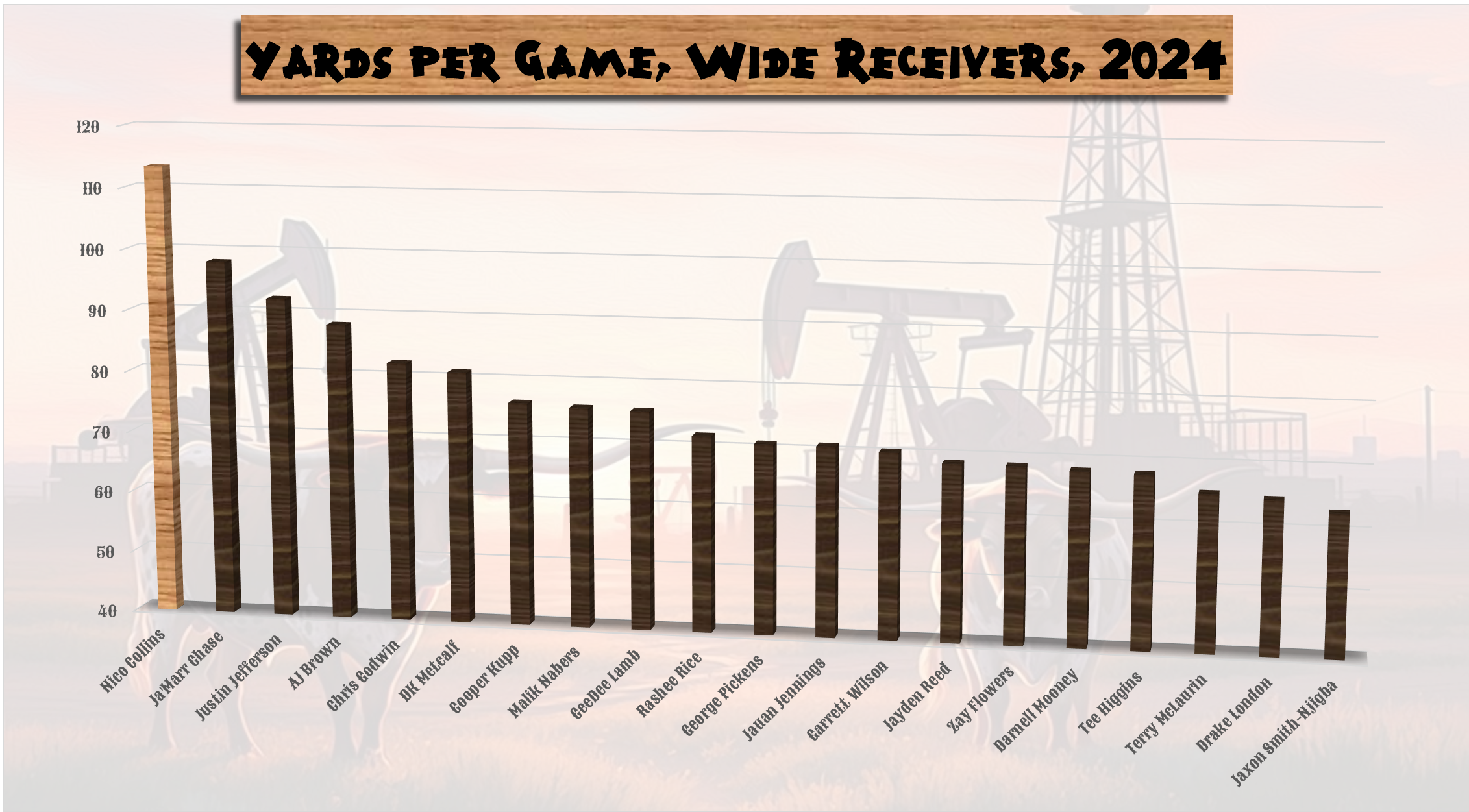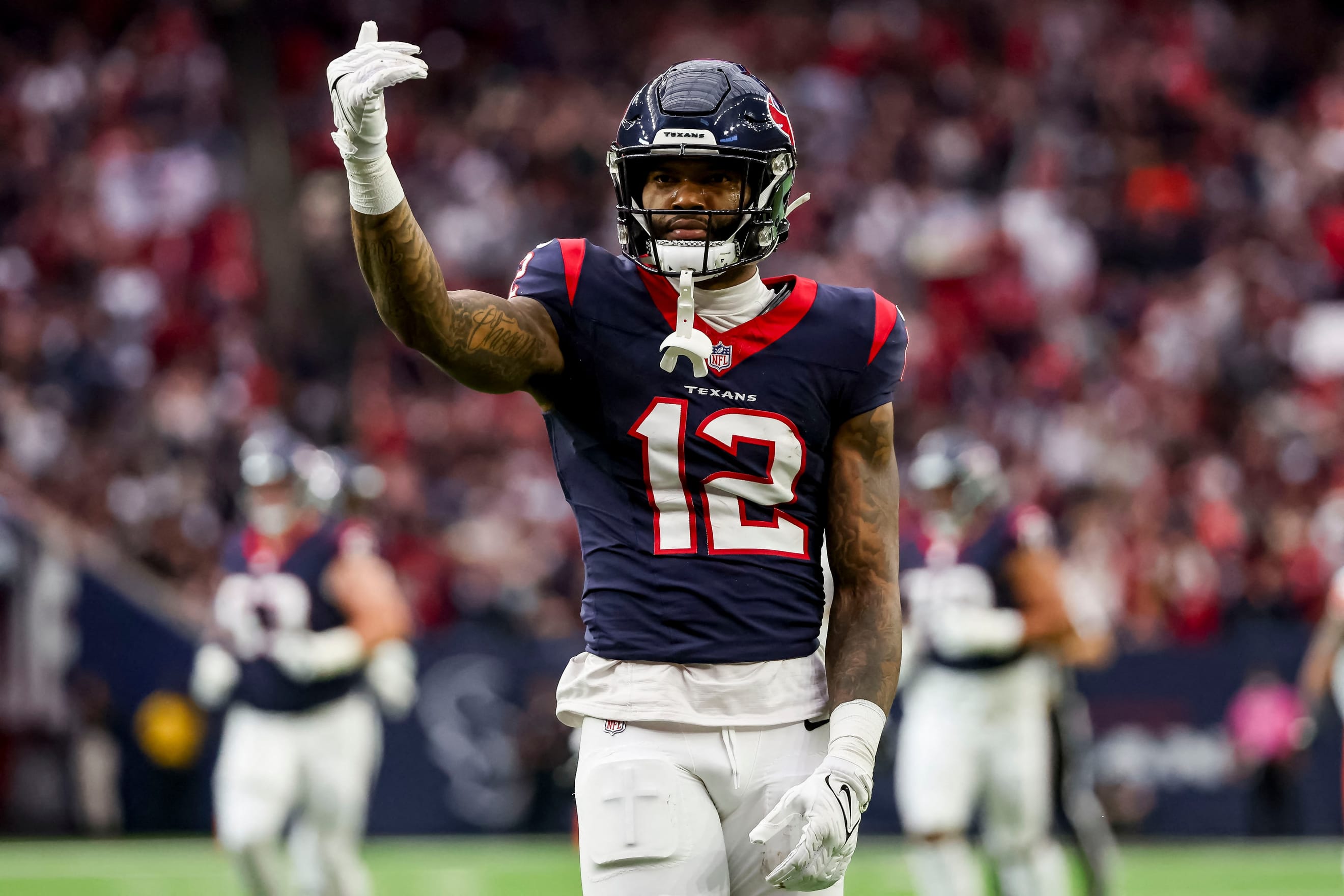
Quick Slant: MNF - The Cowboys Are What Fantasy Sadness Looks Like
Texans @ Cowboys, Sunday @ 8:15 PM
Growing up in the northern suburbs of Dallas, my family and I spent a great deal of time Downtown; we regularly attended basketball games at Reunion Arena; the 1987 Mavericks, who my sister worked for, took the Showtime Lakers to seven in the Western Conference Championship, and we witnessed half the regular season. On the way in, we would pass the lipstick-shaped hotel, the Stouffer, and a billboard divided by a waterfall off Harry Hines, which, to my knowledge, is still there. Sometimes, if the traffic was too much on the way out, my father would circumvent the on-ramp, taking Houston to Commerce and crossing right over the white painted X on Elm in Dealey Plaza, where I gathered everyone in the car would shut their eyes and exhale; then, we would move on to back roads that led us to an on-ramp further north.
I always thought Texas stretched out from here – polished, ambitious, and gleaming like glass towers under a big clear sky. Houston, though, was different. My aunt and uncle lived off Staunton Street in the tree-lined River Oaks area, where there was affluence. Ever in favor of culturing us, they would take us into the city; every time we visited, the air hung thicker, and the streets felt alive with more chaotic energy – at once, embracing Cowboy culture, multi-ethnicity, and the blue-collar side of money. They’d say Dallas was all hat and no cattle; Houston, we’d say, was humid, messy, and hectic. The cities will forever feud over barbecue and Tex-Mex, culture and history, oil and banking, politics and music. Each would claim that they were more Texas than the other. The truth? Neither is, and they both are. Texas is the starched shirts and the sweat stains, as big as all our contradictions.
The sports rivalries have come along slowly. The Mavs and Rockets have each been good, but seldom at the same time. The Rangers and Astros have been the same way; only a year ago did they converge in a series of genuine consequence. The Cowboys and Oilers were in different conferences – might as well have been different universes. When the Texans came to fill the void, the NFL slapped them in the AFC South. And so, despite a mere four-hour drive through the bluebonnet-lined meadows along I-45, there has been no room for a rivalry to bloom.
But this won’t stop Texans from wielding the result like a blade at the next family reunion, where barbs come wrapped in polite smiles, a venomous “Bless your heart,” and the kind of handshake that feels more like a promise than a greeting. It’s not just sports – it’s personal, always personal.
Texans’ Implied Team Total: 24.25
Let’s be frank; this game looked better two weeks ago when Dak Prescott was still on two feet; from here, it seems like no contest. In recent weeks, the Texans have seen their record sink in pardonable losses while bearing the brunt of awful injuries. Arguably, the Texans always were, but they must be seen as the vastly better side by now.
This is not to say that the Texans are, or ever were, elite. They certainly have their flaws. Houston enters Week 11 ranked 20th in EPA per play and 20th in offensive success rate. They rank 18th in EPA per dropback and 23rd in offensive success rate on dropbacks.
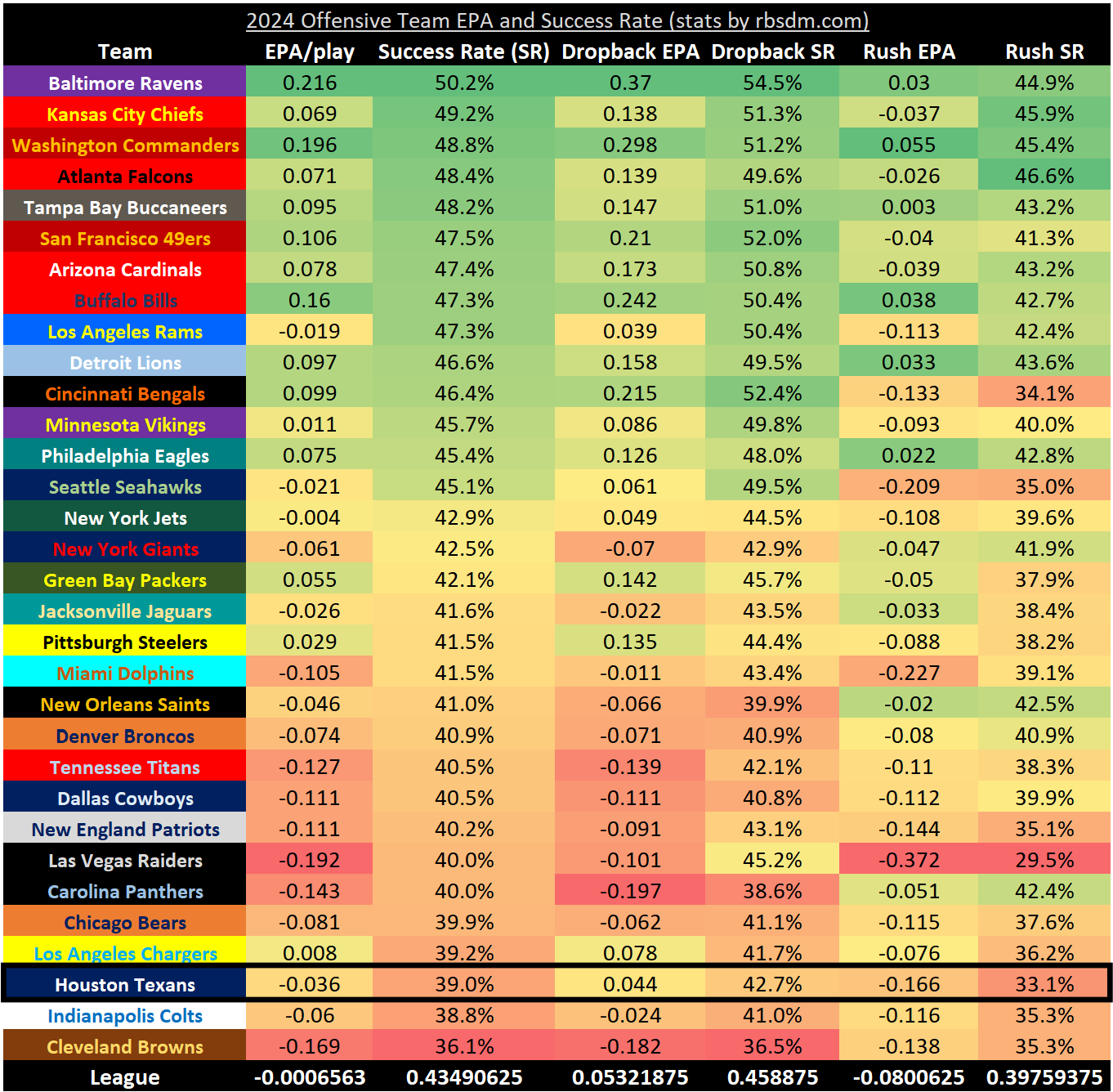
The Texans rank 13th in pass rate over expected (PROE). From a neutral script, Houston passes 52% of the time, tied for 21st, and averages 29.5 seconds to snap, which is tied for 24th. Still, they have the most offensive snaps per 60 minutes. Some of this is due to their behavior outside of neutral scripts.
From a deficit of seven or more, their pass rate climbs to 75%, which is second in the league. While leading by seven or more, which they have done on 24% of plays, they are also pass-heavy at 58%, tied for second place. Essentially, they are run heavy in neutral scripts and pass-heavy otherwise.
Houston’s opponents have also run faster game plans, averaging 25.3 seconds at the line of scrimmage while running only 61 plays per 60 minutes, tied for the fourth-fewest. This means their opponents play fast with the ball and do not possess it for long. So, the Texans, in turn, lead the NFL in time of possession at just shy of 33 minutes per 60.
C.J. Stroud, the reigning Offensive Rookie of the Year, leads Houston. Much was expected in Year 2, but Stroud has only backpedaled from his historically strong rookie season.
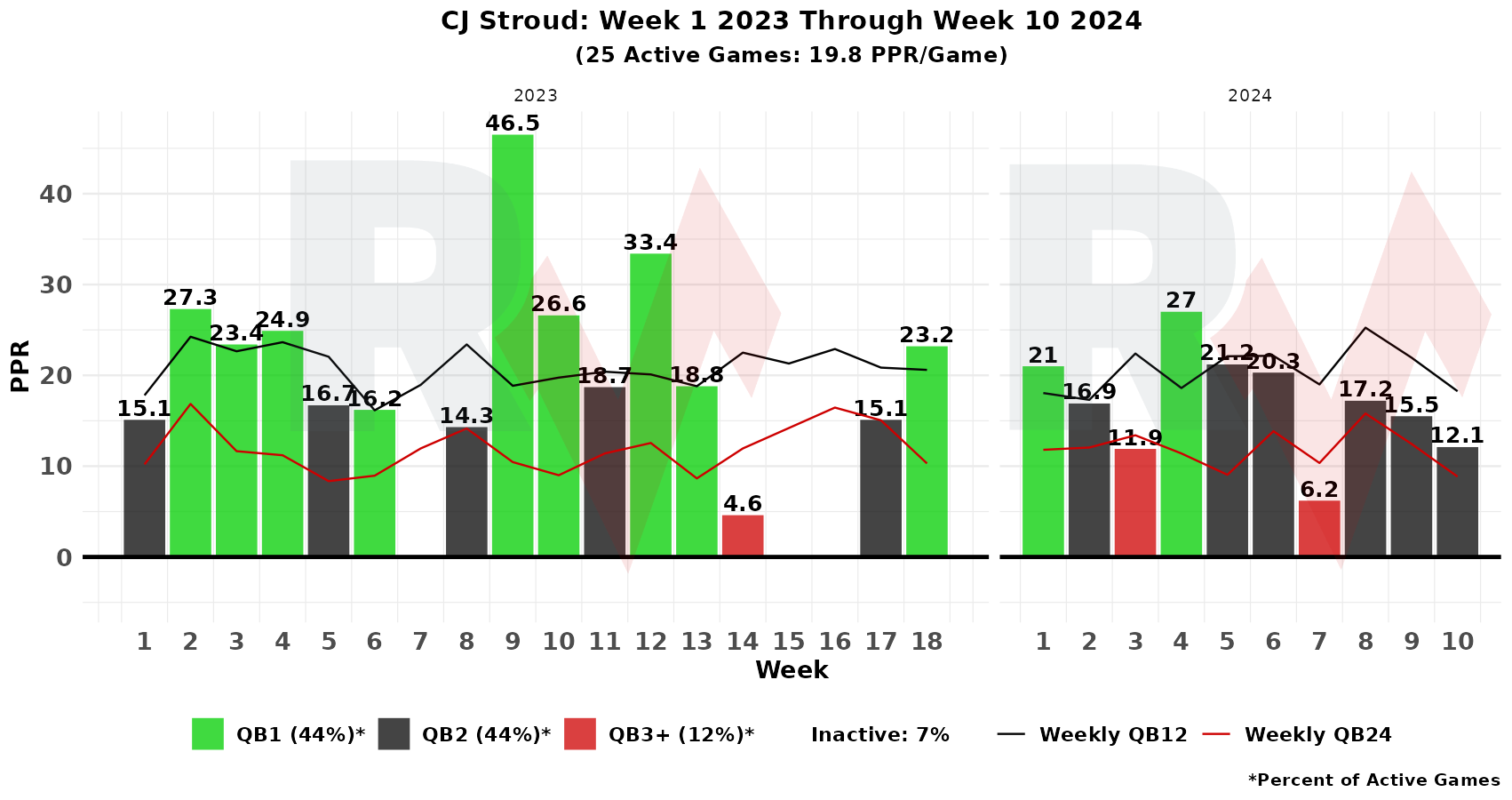
Stroud was a QB1 60% of the time a year ago; this year, he is at 20%. Last year, he averaged 21.6 PPR per game, good for seventh; this year, he averages 16.9, which ranks 22nd. His EP/G is almost identical – 18.7 in 2023 versus 18.5 in 2024. The difference is his efficiency; his FPOE has dropped 4.5 FPOE since last year, and he’s losing 3.0 per game. He has also had the second-most significant downturn in EPA + CPOE composite from 2023 to 2024, trailing only the Cowboys’ Prescott.
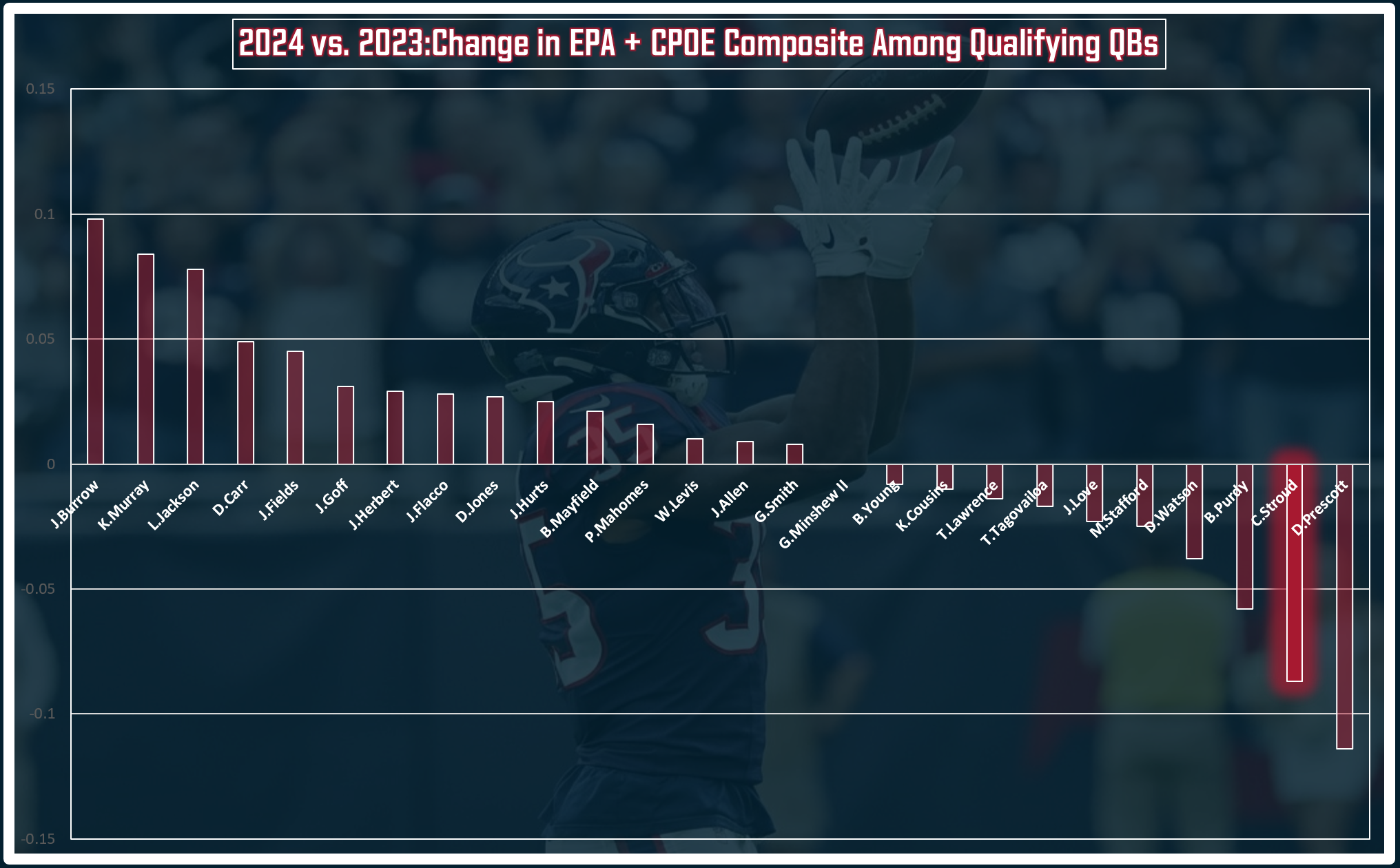
Pressure allowed seems like one of Houston's predominant problems; they have allowed the third highest pressure rate over expected (PrROE). Dallas generates significant pressure, especially while Micah Parsons, who returned from injury last week, is healthy. The Cowboys get the fourth-highest PrROE. This matchup represents the second-largest defense-favorable discrepancy between offensive PrROE allowed and defensive PrROE generated across all Week 11 games.
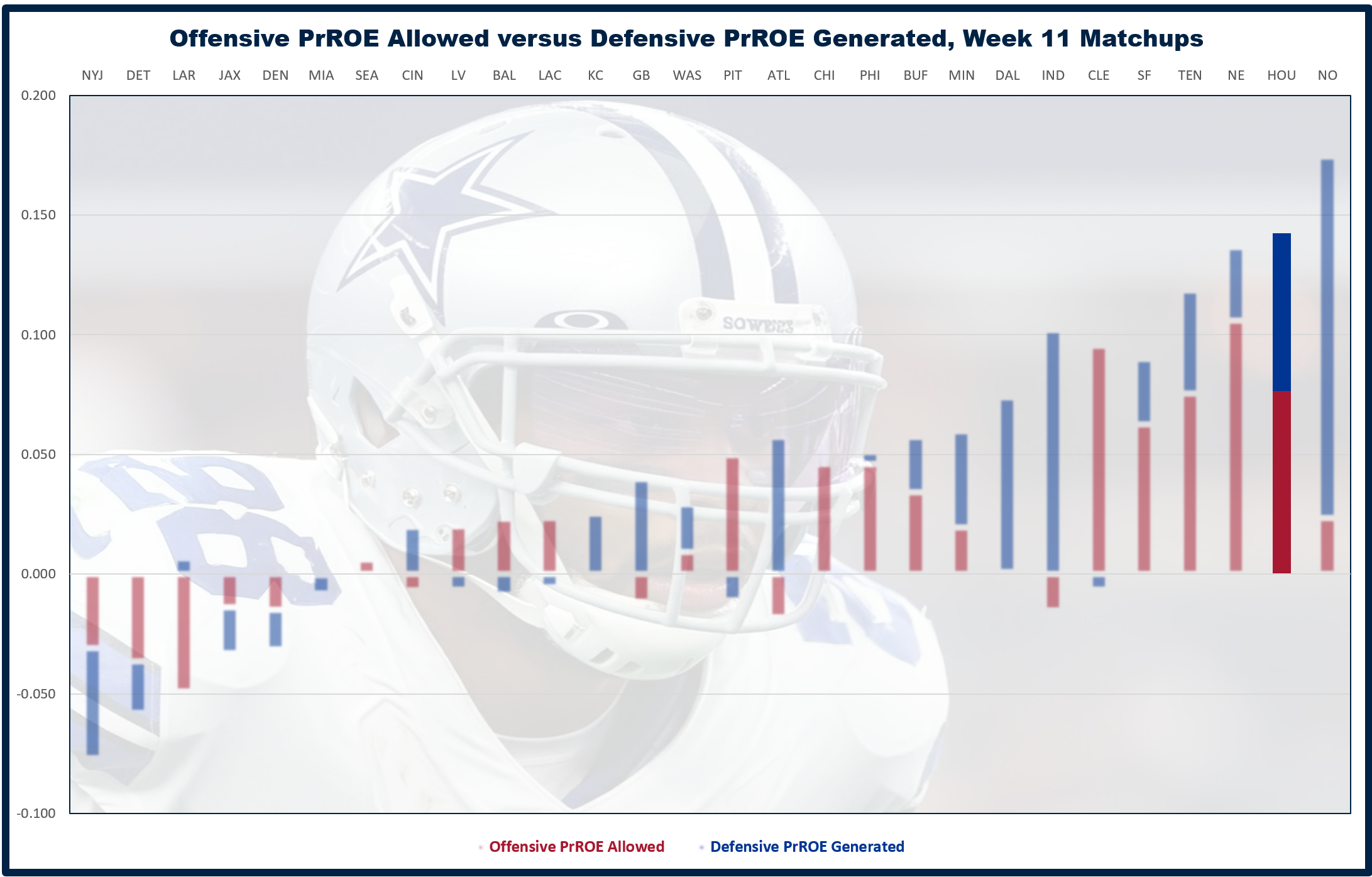
Stroud is very good at handling pressure compared to the field at QB; he loses only 12.4 QB rating points while under duress, ninth best among QBs with at least 100 attempts.
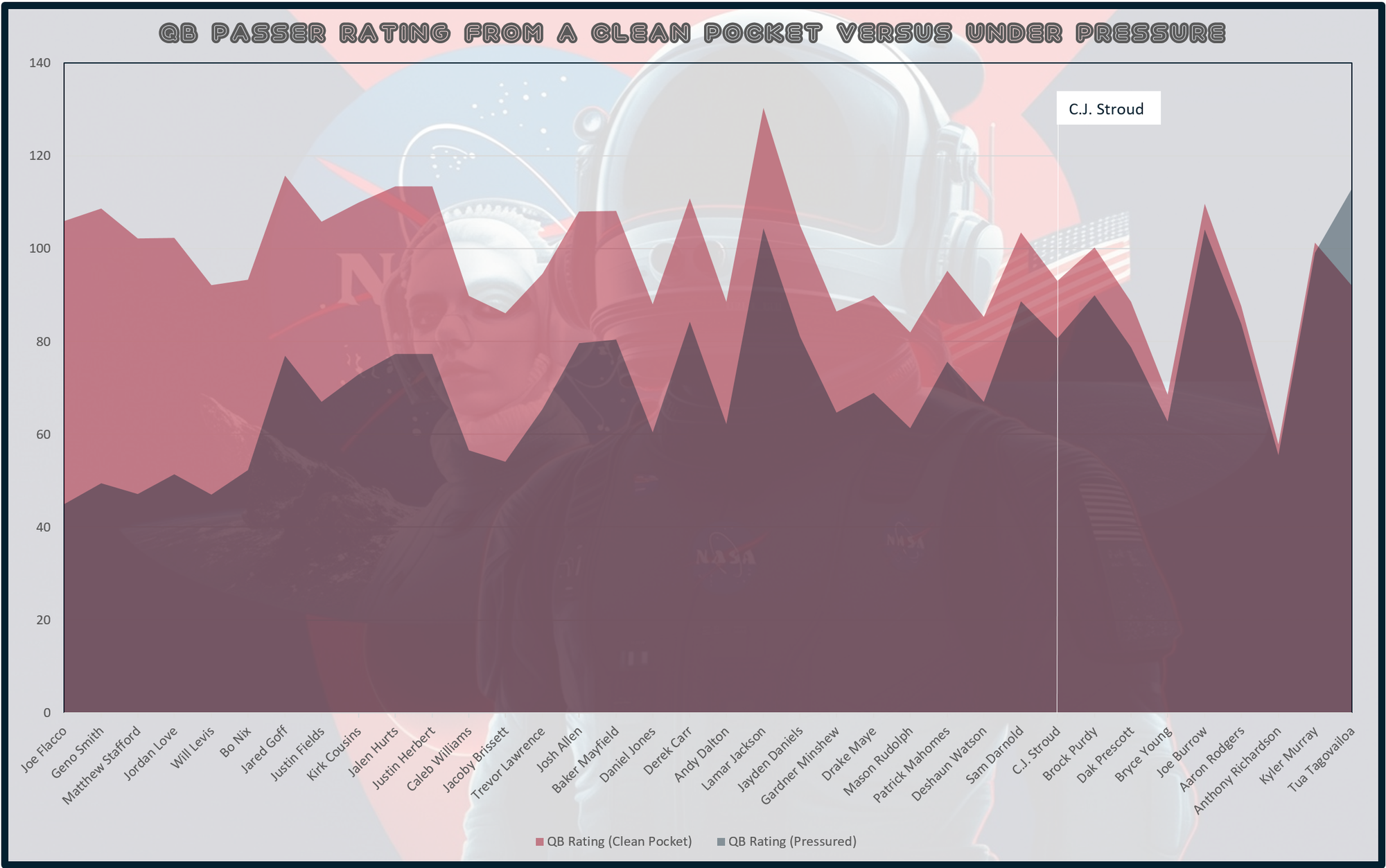
The most welcome news of the week for Houston is the return of Nico Collins. Collins hasn’t played since Week 5, when a hamstring injury derailed him in the first quarter against Buffalo. He ranks second in PPR/G, comprising nearly equal parts EP (6th) and FPOE (2nd). Collins leads the NFL in PFF grade, YPRR, and receiving yardage per game, is seventh in receptions and receiving TDs/G, fifth in air yards/G, eighth in QB Rating while targeted, and tenth in weighted opportunity rating. Frankly, he is one of the best WRs in the league.
